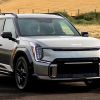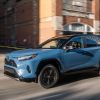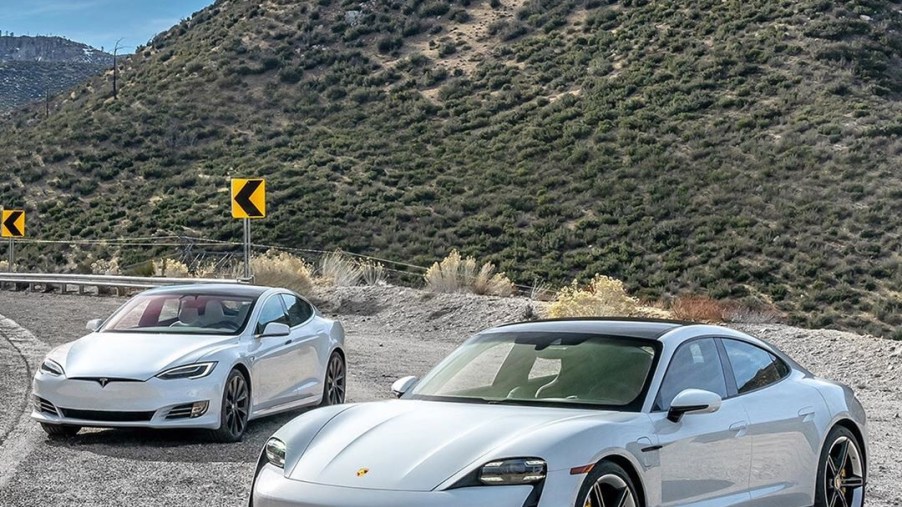
The Porsche Taycan Is More Efficient Than the EPA Says It Is
In addition to some of its recent quality teething issues, the Porsche Taycan has also been criticized for its somewhat-limited range. The EPA rated the Turbo model’s range at 201 miles, which, to be fair, should be enough for most owners. It’s tough, though, when the Tesla Model Y and Model 3 are rated at over 300 miles. However, just like with 0-60 tests, real-world EV range doesn’t always match what the tests claim.
The Porsche Taycan can beat the EPA’s estimate
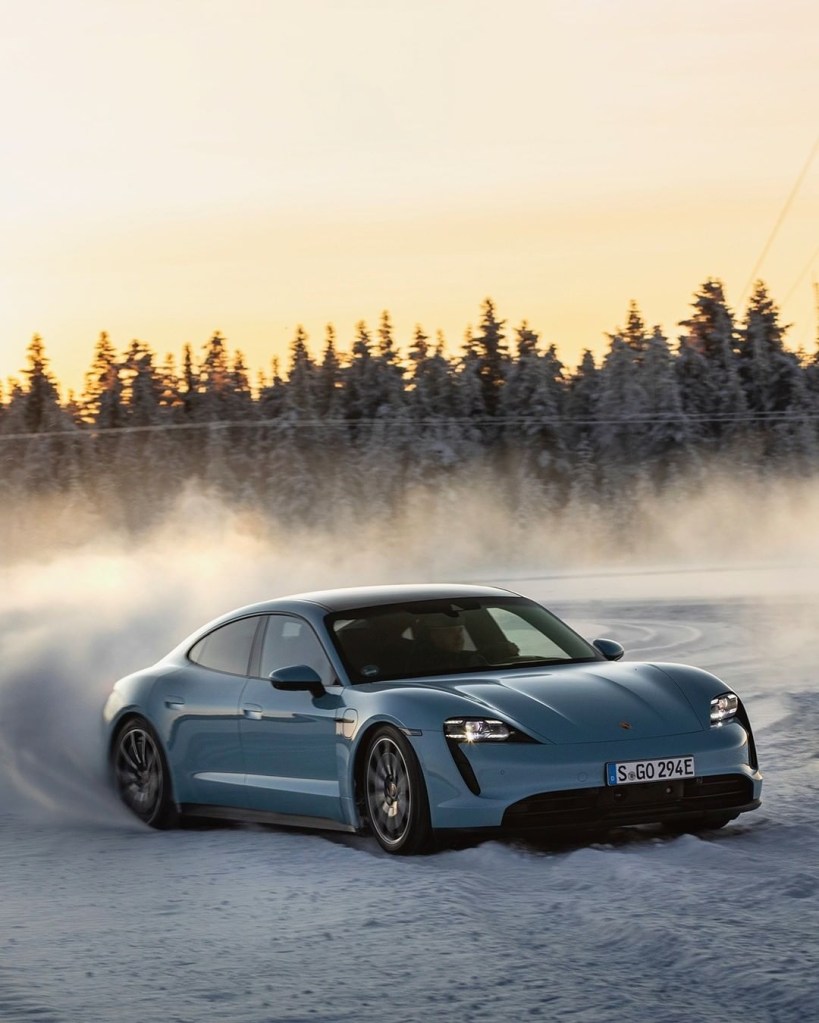
In addition to the high-performance Porsche Taycan Turbo and Turbo S trims, there’s also the 4S model. It doesn’t make quite as much power as the Turbo trims, Car and Driver reports, due to a somewhat-detuned rear electric motor. However, it still makes 429 hp and 472 lb-ft, Roadshow reports, and up to 522 hp using launch control. And, if you upgrade from the standard 79-kWh battery to the 93-kWh one, those base numbers increase to 482 hp and 479 lb-ft.
But, despite the decreased performance—and $47,100 lower price—the Porsche Taycan 4S isn’t that much more efficient than the Turbo model. The EPA estimates the 4S can only go 203 miles on a charge. However, recent reports put both the 4S’ and Turbo’s estimates into question.
The Drive’s Alex Roy took a brand-new Porsche Taycan Turbo on an 800-mile round-trip between Santa Monica, CA and Phoenix, AZ. Going east, he switched between the EV’s Normal, Sport, and Sport Plus driving modes. Coming back, he exclusively used the Range mode. And by the end of the test, he managed to eke out 295 miles of range out of the car. Also, he reports a German magazine saw 341 miles of range in its mixed-condition testing of the 4S.
To be fair, Roy was driving almost entirely on the highway. However, in mixed city and highway driving, Roadshow was able to get about 250 miles of range out of a Porsche Taycan Turbo. Spirited driving, Autoblog reports, naturally decreases range quickly, as it would with any EV or ICE car. Even so, Autoblog recorded roughly 245 miles of range in its Turbo test.
But, while the Porsche Taycan’s range seems conservative, Tesla’s cars may have the opposite problem.
Tesla’s cars struggle to match EPA estimates
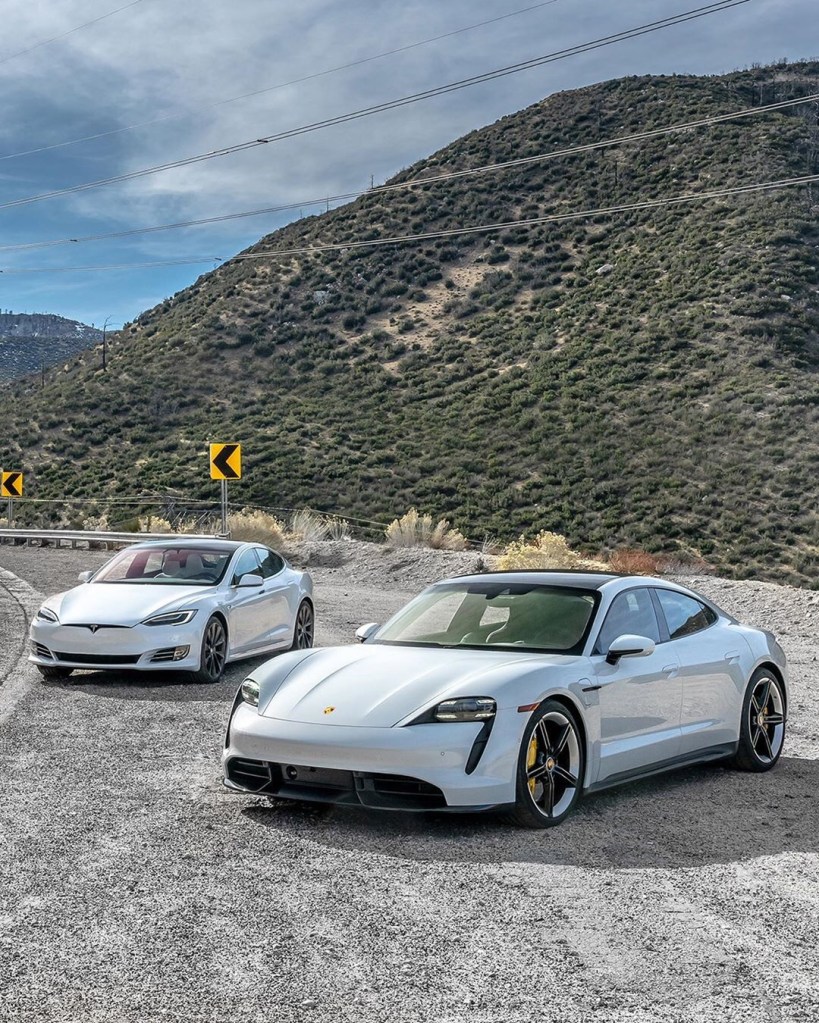
In its comparison between the Porsche Taycan Turbo and Tesla Model S Performance, Car and Driver also beat the Taycan’s EPA estimate. However, its Model S only achieved a range of 222 miles—and the EPA rates it at 325 miles. And the range test was performed at a GPS-verified speed of 75 mph around a flat oval testing track.
Other publications have had similar discrepancies between Tesla’s claimed and observed ranges. The Model 3 Performance, for example, is EPA-rated for 299 miles. Autocar, though, only saw 239 miles of real-world range. And when Carwow ran a Tesla Model 3 on the highway until it completely died, host Mat Watson only achieved 78% of its claimed range: 270 miles instead of 348.
Tesla’s SUVs also seem to be performing worse than their EPA claims. Autocar only saw 233 miles of the claimed 289 miles of range during its time with the Model X.
These range issues, though, aren’t necessarily the fault of Porsche or Tesla.
Why EPA estimates for EVs are off
It’s important to note that the EPA rarely tests cars itself. Instead, the automakers usually test their cars using the EPA’s standard procedures. That’s what appears to be the case, for example, with the recently-spotted camouflaged C8 Corvette.
However, the EPA did test the Taycan, The Drive’s Jonathan Klein tweeted, but not Tesla’s cars. That might be why Porsche requested an additional independent test when the EPA estimates were announced, Jalopnik reports. However, there’s another wrinkle to the story.
Engineering Explained’s Jason Fenske reports he spoke with a Porsche spokesperson on the Taycan’s range estimate. Apparently, Porsche did perform its tests according to EPA standards. The EPA, however, wanted to confirm the results, which the agency claims it does for 15%-20% of vehicles. And because both sets of numbers matched, the 201-mile range figure was published. But, there’s yet another complication.
Fenske reports that Porsche specifically used the ‘conservative’ version of the EPA’s testing procedures. As the EPA explains, fuel-efficiency and range tests aren’t actually performed in the real world. They’re performed under laboratory conditions that ‘mimic’ real-world city and highway driving. This is why the fuel economy stickers have “your mileage may vary” on them. The real world and the lab are two very different environments. Wind, temperature, and accelerator pressure all affect energy consumption.
This method of testing has been criticized in the past. Because it’s not performed out on the street, it means automakers sometimes tune their cars to do well in the test, but worse IRL. That’s what happened with VW’s diesel cars, and why turbocharged engines aren’t necessarily more fuel-efficient than naturally-aspirated ones.
In the case of the Porsche Taycan, though, because Porsche was conservative with testing, its EV goes further IRL.
Follow more updates from MotorBiscuit on our Facebook page.

